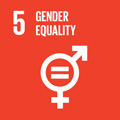- Docente: Monica Dall'Asta
- Credits: 12
- SSD: L-ART/06
- Language: Italian
- Teaching Mode: Traditional lectures
- Campus: Bologna
- Corso: First cycle degree programme (L) in Drama, Art and Music Studies (cod. 0956)
Learning outcomes
Learning outcomes
By the end of this class students will:
- know the basic notions of the theory of cinema, with special attention to the concepts developed in the classical period (1915-1945), with a few significant openings on the following period;
- acquire a theoretical competence allowing them to fully understand the language of film;
- master the specific language of cinema studies;
- know how to connect the theoretical debate on cinema with the history of the arts in the 20th century.
Course contents
Part 1. Classical Film Theories
Theories of montage
- Lev Kuleshov: making meaning with montage
- Sergej Ejzenštejn: montage as dialectics
- Dziga Vertov and the "theory of intervals"
- Esfir Shub and "factographic" editing
Theories of Photogénie
- The beauty of cinema according to Louis Delluc
- Jean Epstein and the photogénie of the imponderable
- Photogénie and "estrangement" (Victor Sklovsky)
Theories of Reproducibility
- Walter Benjamin: film and the end of the aura of the artwork
- André Bazin: from the aura of the image to the aura of the event
Part 2: From the essay-film to the video-essay
- Theories of the essay-film from Hans Richter to Jonas Mekas
- Esfir Shub, Myriam, Nicole Vedrès, Agnès Varda: the female genealogy of essayistic filmmaking
- The essay film and the "politique des auteurs": Alexandre Astruc, André Bazin, Jacques Rivette
- Sergej Ejzenšstejn, Guy Debord e il Capitale di Marx
- Jean-Luc Godard's Histoire(s) du cinéma
- From the essay-film to the video-essay
- Functions and models of videographic film criticism
Readings/Bibliography
Readings and screenings are listed below in four different groups.
1) Lecture notes provided by the teacher:
- Che cos'è la teoria del cinema?
- Ricciotto Canudo: il cinema come settima arte
- La fotogenia secondo Louis Delluc
- La fotogenia secondo Jean Epstein
- L'avanguardia russa al tornante della Rivoluzione d'Ottobre
- Lev Kulešov, maestro del cinema sovietico
- Sergej Ejzenštejn: dal montaggio delle attrazioni al montaggio intellettuale
- Dziga Vertov, il kinokismo e la fabbrica dei fatti
2) Books and book chapters:
- Walter Benjamin, The Work of Art in the Age of Its Technological Reproducibility (1936)
- André Bazin, What Is Cinema? Vol. 1.
3) Readings for Part 2
- Chiara Grizzaffi, I film attraverso i film. Dal testo introvabile ai video essays, Milano, Mimesis, 2017.
Teaching methods
Assessment methods
The final examination will take place in the form of an interview in Italian. Students will be asked to answer a few questions about the program, so as to verify whether they have achieved the following learning outcomes:
Ability to historically contextualize the main periods in the development of film theory, especially with regard to the classical period, as well as to understand the continuity and discontinuities lines along the elaborations of the different authors in the syllabus
Ability to use the theoretical tools acquired to analyze the films in the syllabus
Mastery of the specific vocabulary of cinema studies
Ability to link the theoretical debate on cinema to the history of the 20th century
Students demonstrating a full knowledge and critical understanding of the subject matter will be assessed with the highest marks. Students demonstrating a purely notional exposition of the subject matter will be assessed with good/medium marks. Students with a limited knowledge of the subject, an uncertain or inappropriate vocabulary will be assessed as barely sufficient. Students with major learning gaps in both critical- theoretical-critical and historiographic terms will be assessed as insufficient.
Teaching tools
Video projector, Internet connection. An E-learning course is available at https://iol.unibo.it/course/view.php?id=16684
Links to further information
Office hours
See the website of Monica Dall'Asta
SDGs


This teaching activity contributes to the achievement of the Sustainable Development Goals of the UN 2030 Agenda.
